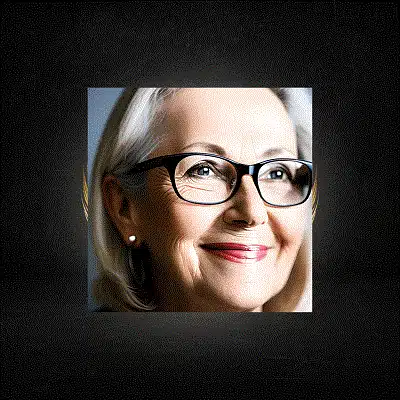Drug Use amongst the Over 50s: A Hidden Crisis

Recreational drug use, long considered a problem associated primarily with the young, is a rising concern amongst adults over 50.
It’s a fair guess that most of us in our 50s and older, know someone, or indeed have a family member with a drug issue.
That could be alcohol, prescription medication, cannabis, or perhaps even more damaging, illegal drugs.
It is so common among the middle-aged now, that very few of us are oblivious to this issue.
So I want to look at the concerning trend of drug use in the middle-aged, the reasons behind it, and the potential health implications.
1. The Unnoticed Epidemic
Ironically, substance abuse is often associated with the youth, yet a noticeable surge in the incidence amongst individuals over the age of 50 is often overlooked.
The trend is alarming as it indicates that a significant number of older adults are dabbling in recreational drugs, some even for the first time in their lives.
Historically, drug use has been associated with certain subcultures or risk groups.
However, studies show that substance abuse among middle-aged individuals has steadily increased.
This increase can be attributed to increased stressors like workloads or personal difficulties during midlife transitions.
These factors may lead to self-medication with drugs or alcohol to alleviate emotional distress.

2. The Scope of the Issue
The scale of drug use amongst older adults is substantial and rising.
Nearly a million adults aged 65 and older live with a substance use disorder (SUD), a shocking statistic derived from 2018 data.
In 2022, a record number of adults aged 35 to 60 engaged in binge drinking, as revealed by a study funded by the National Institute of Health.
The research discovered that almost 30 percent of individuals within this demographic reported binge drinking in the said year, marking a steady increase in this conduct.
Back in 2012, only 23 percent of adults in this age group admitted to binge drinking.
In addition, marijuana usage among this population also reached unprecedented heights, with 28 per cent reporting the activity, up from 13 per cent in 2012.
Within this age group, hallucinogen use also saw a significant increase – up 4 per cent in 2022, which is twice the figure from just a year earlier, in 2021.
The proportion of older adults admitted to treatment facilities for SUD has increased significantly over the last decade.
3. The Impact of Substance Misuse on Older Adults
Ageing brings about social and physical changes that could enhance susceptibility to substance misuse.
Older adults typically metabolise substances more slowly, and their brains can be more sensitive to drugs.

As they age, individuals addicted to drugs like cocaine may experience an accelerated age-related decline in brain health, making them more vulnerable to adverse consequences.
Moreover, older adults are more likely to experience mood disorders, lung and heart issues, or memory problems. These conditions can be exacerbated by drug use, leading to more severe health consequences.
4. The Role of Prescription Medications
As adults age, the likelihood of developing chronic health conditions increases, resulting in more prescription medicines being administered.
This exposure to potentially addictive medications poses a significant risk.
For instance, a study of 3,000 adults aged 57-85 showed a common mixing of prescription medicines, nonprescription drugs, and dietary supplements.
Accidental misuse of prescription drugs and possible worsening of existing mental health issues are other risks.
A 2019 study highlighted that over 25% of patients over the age of 50 who misuse prescription opioids or benzodiazepines, express suicidal ideation.
5. The Issue with Pain Medication
Opioid pain medicines, often prescribed to manage chronic pain in older adults, can lead to addiction if taken for extended periods or in high doses.
Between 4-9% of adults age 65 or older reportedly use prescription opioid medications for pain relief.
The proportion of people in this age group seeking treatment for opioid use disorder has sharply increased in recent years.
6. The Escalation of Marijuana Use
In recent years, cannabis use has significantly spiked among adults over 50.
One U.S. study suggests that close to a quarter of marijuana users aged 65 or older report that a physician had recommended marijuana in the past year.
However, it’s essential to remember that the marijuana plant has not been approved by the Food and Drug Administration (FDA) as a medicine.
Hence, the potential benefits of medical marijuana must be weighed against its risks, especially for individuals with other health conditions or prescribed medications.
7. The Dangers of Uncontrolled Nicotine and Alcohol Use
Alcohol is the most used drug among older adults, with about 65% of people 65 and older reporting high-risk drinking.
8. The Baby Boomers: A Generation at Risk
The baby boomer generation, born between 1946 and 1964, is more susceptible to becoming dependent upon drugs or alcohol than previously thought.
A rise in the addiction rate in midlife adults has been correlated to an increase in depressive disorders among adults aged 45 to 60 years old.
9. The Neurological Impact of Recreational Drug Use
Recreational drug use can result in a myriad of neurological problems, from seizures to strokes.
These problems can arise directly due to the drug or indirectly through other mechanisms.
Identifying these in individual cases can be challenging.
10. Seeking Help and Treatment
Recognising the signs of addiction and seeking help is vital. Substance abuse amongst the middle aged is often misdiagnosed as other health conditions.
It is essential to identify the location of the neurological lesions first before attributing them to drug use.
Drug addiction is a significant health risk for the over 50s.
As the death toll rises among middle-aged individuals, it is becoming increasingly difficult for this addiction epidemic to go unnoticed.
Therefore, awareness, early detection, and appropriate intervention strategies are crucial in addressing this growing public health concern.





